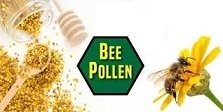
What Is in Bee Pollen?
 As several of us apprehend, bee pollen is one of nature’s “super foods”: rich in vitamins, minerals, and different nutrients, this contains several essential ingredients that are necessary to sustain life. People who are knowledgeable about health foods and healthy diets speak typically concerning bee pollen: however what, specifically, is it?
As several of us apprehend, bee pollen is one of nature’s “super foods”: rich in vitamins, minerals, and different nutrients, this contains several essential ingredients that are necessary to sustain life. People who are knowledgeable about health foods and healthy diets speak typically concerning bee pollen: however what, specifically, is it?
Generally called “ambrosia,” This can be the pollen that employee bees collect from flowering plants. These grains contain the mail germ cells created by all plants as part of the fertilization process. They carry this raw pollen back to their hives, where it’s mixed with some honey and eventually fed to bee larvae. (Those larvae that are destined to become queen bees are fed “royal jelly” rather than bee pollen.)
Whereas the composition of it varies slightly from region to region — depending on the flower mix from that the pollen is collected, the climate, and other variables — all this is extremely rich in nutrients. This contains a minimum of eighteen vitamins, as well as most B-advanced vitamins, vitamins A, C, D, E, and F, folic acid, choline, inositol, rutin and more.
Minerals that are found in this embody calcium, phosphorus, potassium, iron, copper, iodine, zinc, sulfur, sodium, chlorine, magnesium, manganese, molybdenum, selenium, boron, silica, and titanium. Usually, we tend to must consume minerals in an exceedingly proper balance — if we take a calcium supplement, for instance, then levels of manganese, phosphorus, magnesium, and zinc are depressed. This is not only a source of a minimum of twenty five minerals, however could be a balanced source: these minerals are gift in a very ratio that is most useful to our health.
The protein content of bee pollen ranges from 10 to thirty five p.c, averaging concerning twenty percent. Nearly of this protein is in the shape of fee amino acids: all this twenty two amino acids, though proportions vary slightly among bee pollen samples. There is a larger proportion of protein in bee pollen than in beef, eggs, or cheese; this could therefore be a great source of protein for vegetarians. About 35 grams of bee pollen taken daily will give all the body’s protein requirements.
Bee pollen additionally contains natural sugars, including fructose, glucose, pentose, raffinose, and sucrose; these are the identical natural sugars that may be found in honey, and they are present in chains and bonds that are easily digested. Several of those sugars after all are converted to predigested form by the bees’ salivary glands. Some carbohydrates and fats are gift in bee pollen; fats and oils, specifically fatty acids, account for regarding 5 percent of bee pollen’s total composition.
Certain enzymes, which are essential within the digestive process, are present in bee pollen; the enzyme composition of this compares with that of yeast, and therefore the alcoholic fermentation of pollen is identical to that of yeast. Enzymes found in bee pollen embody amylase, catalase, cozymase, cytochrome, dehydrogenase, diaphorase, diastase, lactic acids, and more.
Additionally, bee pollen contains nearly sixty trace minerals, all in highly digestible type, in addition to antiobiotic elements that help counteract bacteria. The shells of the pollen granules contain cellulose and sporonine.
With thus many essential nutrients, it’s no marvel that bee pollen is considered a “super food”!

Leave a Reply